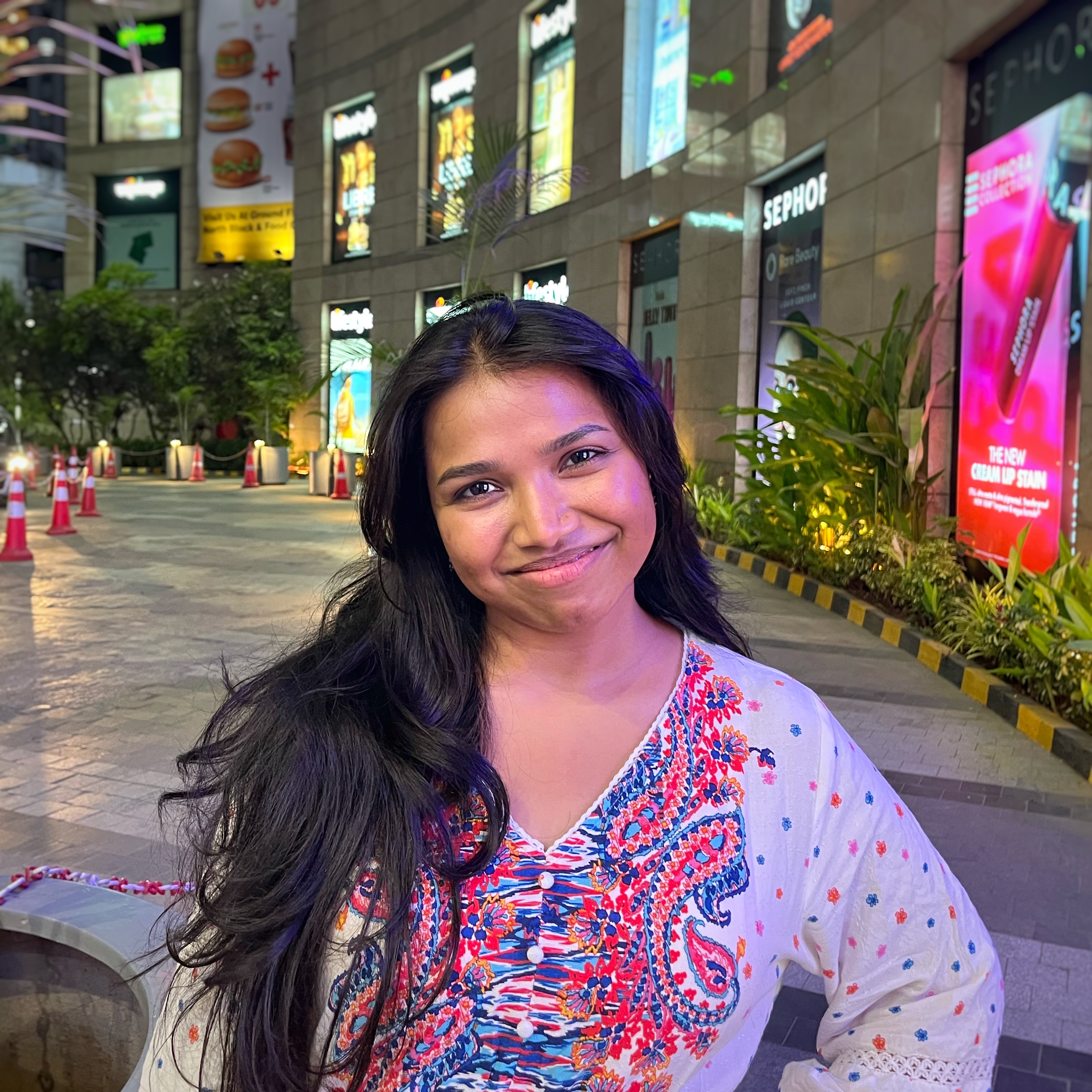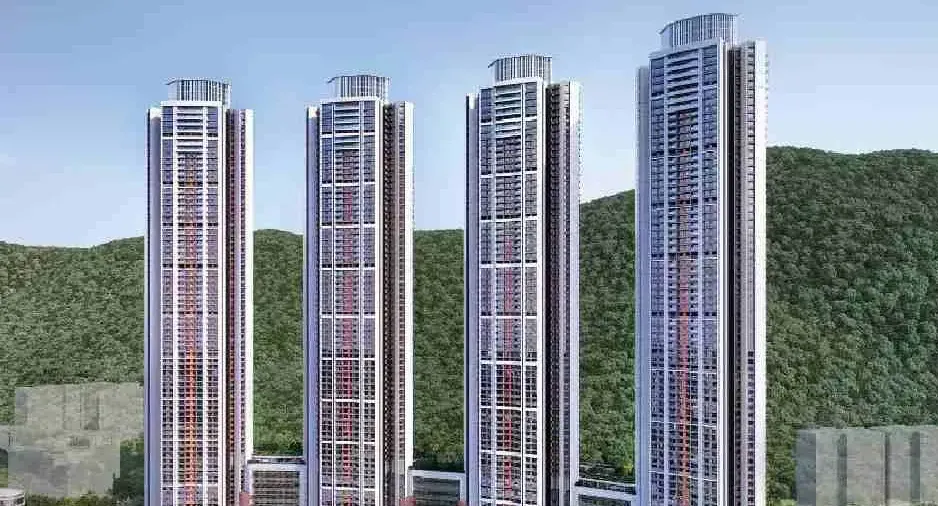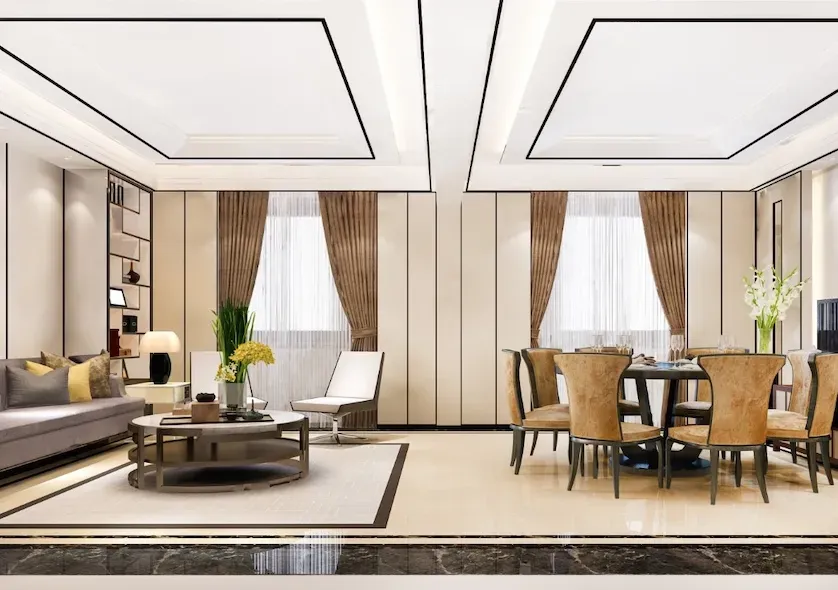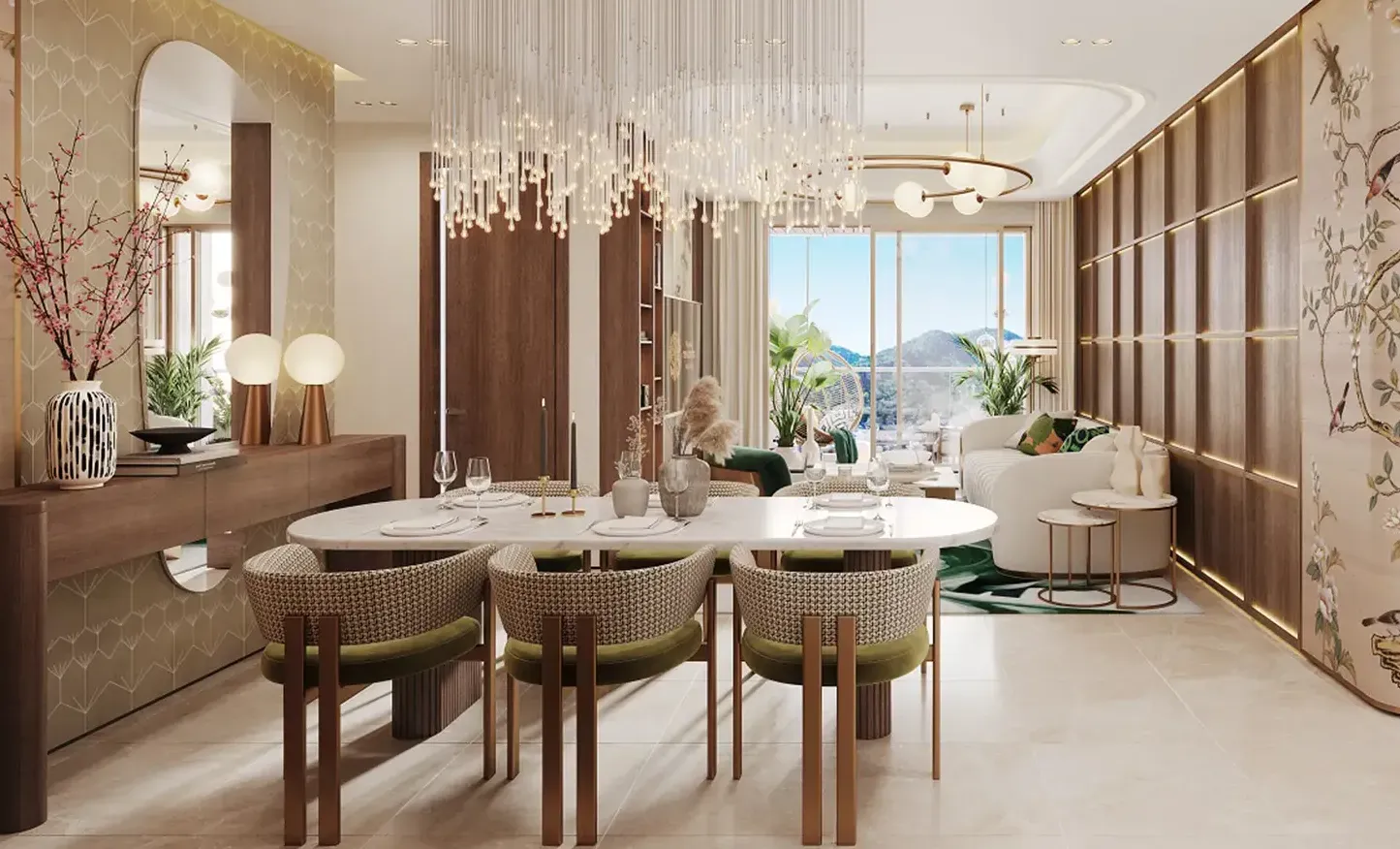Average Cost of 3BHK in Mumbai: Prime vs Suburban 2025

By
Shrusti Naik
Posted on October 13, 2025. 10 mins

Introduction

A 3BHK flat in Mumbai remains a coveted asset, offering ample space, flexibility for growing families, and better rental yields. But what does one realistically pay for a 3BHK in 2025? The spread between prime (South, central, luxury nodes) and suburban zones is wide, and understanding that delta is key to informed decisions.
In this article, we examine the average costs of 3BHK flats in prime versus suburban Mumbai, factor in per-sq-ft rates, showcase sample listings, weigh pros/cons, and help you judge what fits your needs.
1. Key Drivers of 3BHK Pricing in Mumbai
Before numbers, a quick look at variables that drive price:
- Location & vicinity to CBD / business hubs
- Connectivity / transit (railway, metro, highways)
- Amenities, premium finishes, sea view / open views
- Age, structural quality & developer brand
- Scarcity and land value in prime zones versus suburban expanding areas
- Regulatory features (FSI, redevelopment potential)
Because of these, a 3BHK in a prime zone can cost multiples more per sq ft than in newer suburbs. Also read, 2BHK in Mumbai: Best Localities for Price & Lifestyle 2025
2. Market Data: Prime vs Suburban 3BHK Costs in 2025
2.1 Prime / Central / Luxury Zones
- In Worli, a 3BHK in premium societies is listed between ₹5.75 crore – ₹21.15 crore, depending on size, sea view, and level. (magicbricks.com)
- In Santacruz East, average 3BHK listings stand around ₹3.66 crore (range ₹2.40–₹4.91 crore). (magicbricks.com)
- According to Housing, in Western suburbs, 3BHK flats are being listed at ₹3.82–₹3.90 crore, at ~₹32,800 per sq ft. (housing.com)
- Clicbrics reports 3BHK flats priced in Mumbai’s inner zones between ₹2.29 crore – ₹2.86 crore, at ~₹23,973 per sq ft (for non-ultra premium). (clicbrics.com)
- Housing also notes that Mumbai’s average 3BHK per sq ft rate is ~₹27,936. (housing.com)
2.2 Suburban / Peripheral Zones
- In Powai (suburb/mid zone), a 3BHK is listed in the range ₹3,400 – ₹5,900 lakh (i.e. ₹3.4 to ₹5.9 crore) per 99acres property rates. (99acres.com)
- HomeBazaar indicates that 3BHK flats in Mumbai’s suburban regions (emerging localities) range from ~₹2 crore up to ~₹6.5 crore, depending on location and quality. (homebazaar.com)
- MagicBricks wide listings show 3BHK flats in Mumbai spanning ₹1.97 crore – ₹10.13 crore across zones. (magicbricks.com)
Also check out, The Ins and Outs of Property Management for Landlords: Maximizing Your Rental Income
3. Comparative Table: 3BHK in Prime vs Suburb (Illustrative)
| Zone / Locality | Typical 3BHK Price Range | Approx ₹/sq ft Estimate* | Highlights / Characteristics |
|---|---|---|---|
| Worli (Prime) | ₹5.75 – ₹21.15 crore | Very high premium per sq ft (luxury finish, sea views) | Ultra-premium, limited availability |
| Santacruz East | ₹2.40 – ₹4.91 crore (avg ₹3.66 cr) | ~₹27,300–₹40,000 / sq ft | Well connected, central suburbs |
| Western Suburbs (mid premium) | ₹3.82 – ₹3.90 crore | ~₹32,800 / sq ft | Balanced option between price & access |
| Clicbrics mid Mumbai | ₹2.29 – ₹2.86 crore | ~₹23,973 / sq ft | Non-ultra zones, moderate amenities |
| Powai / Suburban | ₹3.40 – ₹5.90 crore | Varies (lower premium) | Growing suburb, good demand |
- Based on classifieds’ floor area vs price.
This table highlights the steep jump in cost in prime areas compared to even well-developed suburban zones.
4. Why the Big Price Gap?
- Land scarcity & legacy value: In prime zones, land parcels are rare, so per sq ft cost is very steep.
- Upgrade premium: Buyers pay extra for sea view, panorama, luxury amenities, brand prestige.
- Better connectivity / centrality: Proximity to downtown, business hubs, luxury retail, social infrastructure matters.
- Developer pricing / brand effect: High end builders in prime zones charge brand premiums.
- Supply constraints: Fewer fresh launches in inner zones push prices higher.
Hence the suburban 3BHKs trade at a discount, but if transit / infrastructure improves, their valuation may catch up over time. Also read, What Salary to Afford a 2BHK in Mumbai in 2025
5. Buyer Considerations & Tradeoffs
5.1 Total Cost vs Sticker Price
Buying in a prime zone means not just higher sticker price, but also higher maintenance, taxes, society upkeep, and possibly premium fit-outs. Suburban properties may incur higher commuting cost.
5.2 Growth Potential
A suburb 3BHK may offer higher CAGR (percentage returns) if infrastructure (metro, roads, redevelopment) comes in. Prime zones may have slower % growth but more stable upside.
5.3 Liquidity & Resale
Prime area 3BHKs often have stronger resale demand from affluent buyers. Suburban ones depend more on evolving demand and population shifts.
5.4 Affordability & Financing
You will need larger capital and EMI capacity to acquire prime 3BHKs. Many buyers prefer suburbs for manageable EMIs and lower entry cost.
Also read, Upcoming Mumbai Metro Corridors and Their Impact on 2BHK Property Values
6. Sample Scenario: Buying vs Renting 3BHK in Prime / Suburb
Assume a 3BHK in a prime zone costs ₹5 crore. With 80% loan @ 9% for 20 years, EMI is ~₹3.75 lakh per month. Add maintenance, etc., total ~₹4 lakh. In contrast, in a suburban node, a 3BHK might cost ₹3.5 crore—EMI around ~₹2.60 lakh, plus lower overheads.
If rent for comparable 3BHK in suburb is ₹1.5–2 lakh per month, you may find owning in suburb feasible earlier, while prime ownership demands much higher income or longer vision.
7. Risks & Caveats to Watch
- Overpaying for prestige: Premium finishing or brand may not yield matching resale markups.
- Changing buyer preferences: Smaller families may lean back toward 2BHKs.
- Infrastructure delays: Suburbs expecting metro connectivity may see delays, stalling uplift.
- Liquidity constraints in suburban zones: Slower resale times in remote localities.
- Regulation / stamp duty / taxes: Cost components like stamp duty, taxes, and registration still add significantly.
Also, beware frauds — for example, a recent case where a Mumbai resident lost ₹1.07 crore in a fake 3BHK deal in Dadar by dealing entirely online without verification. ([The Times of India][1])
Conclusion

In Mumbai in 2025, the average cost of a 3BHK varies dramatically:
- In prime zones like Worli, Santacruz, the cost may range from ₹5+ crore to as high as ₹20+ crore depending on size, view, and luxury features.
- In suburban or mid-zones, 3BHKs might be priced at ₹2–6 crore, with lower per sq ft, but with more tradeoffs in connectivity or amenities.
Your choice depends on capital, risk appetite, income, and time horizon. For many, a strategic suburban 3BHK may deliver better returns per rupee; for others, a prime address holds prestige and security.
For those in pursuit of their dream home, investment opportunities, or a sanctuary to call their own, Jugyah provides top housing solutions with its intelligent technology.
Frequently Asked Questions
-
What is the average ₹/sq ft for 3BHKs in Mumbai in 2025? In prime zones, ₹/sq ft can exceed ₹32,000–40,000 or more. In moderately priced zones, ~₹23,000–₹30,000 is common. Housing lists avg ~₹27,936 per sq ft for 3BHKs. ([Housing][2])
-
Is it sensible to buy a 3BHK in a suburb rather than prime inner zones? Yes, if your budget, income or tolerance for EMI is constrained, suburbs offer a balance. With infrastructure improvements, good suburbs may match yields over time.
-
Do prime zone 3BHKs always outperform suburb ones in return? Not always. The % growth might be faster in a developing suburb if the right infrastructure comes through, though prime zones often provide stable, safer value.
-
How much EMIs would a ₹5 crore 3BHK entail? Roughly speaking, at 80% loan and 9% interest for 20 years, monthly EMI is ~₹3-4 lakh depending on exact loan terms.
-
Can reselling a 3BHK in prime zones be easier than in suburbs? Yes, prime zones attract wealthier buyers and demand is steadier, making resale more fluid than in less developed suburbs.